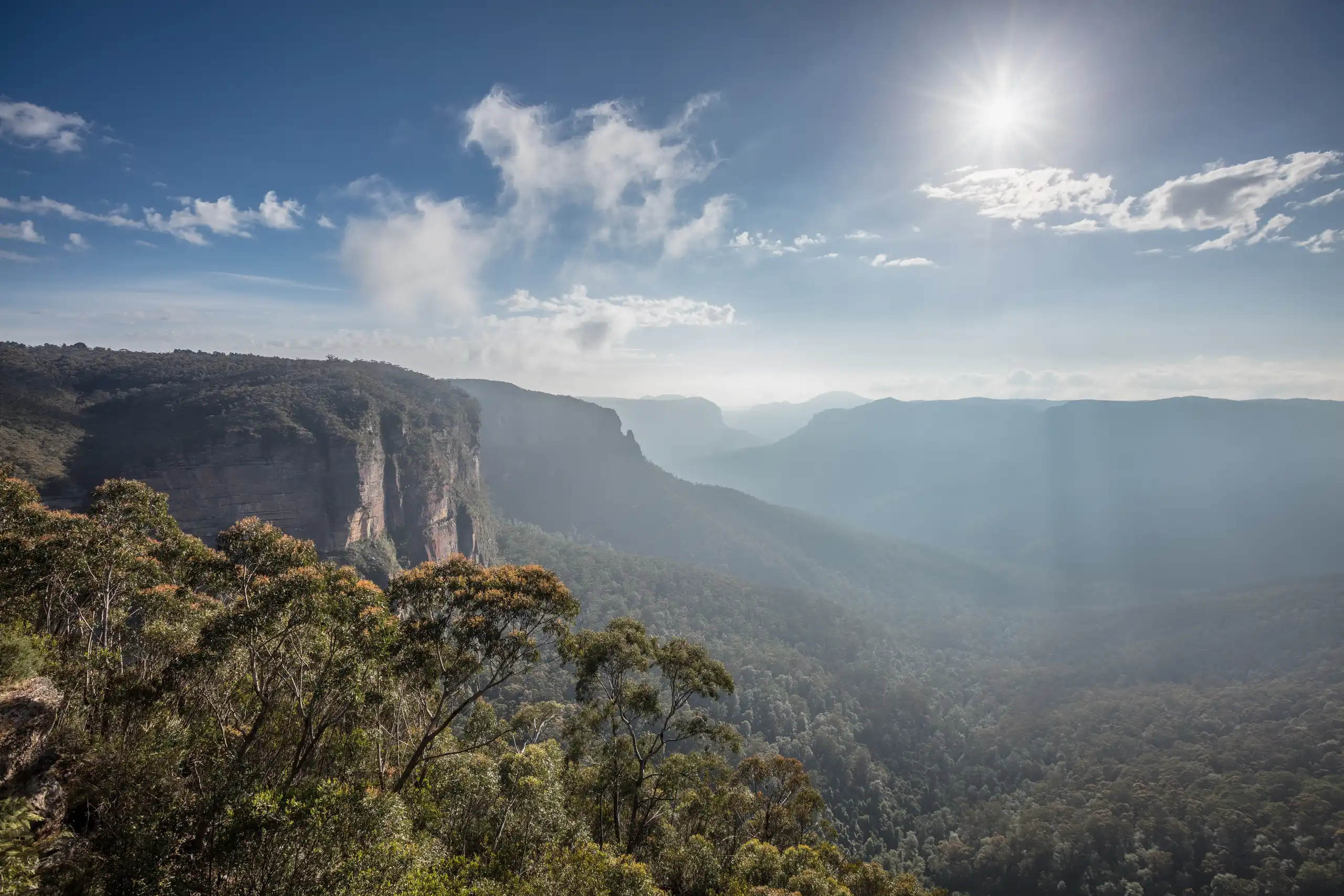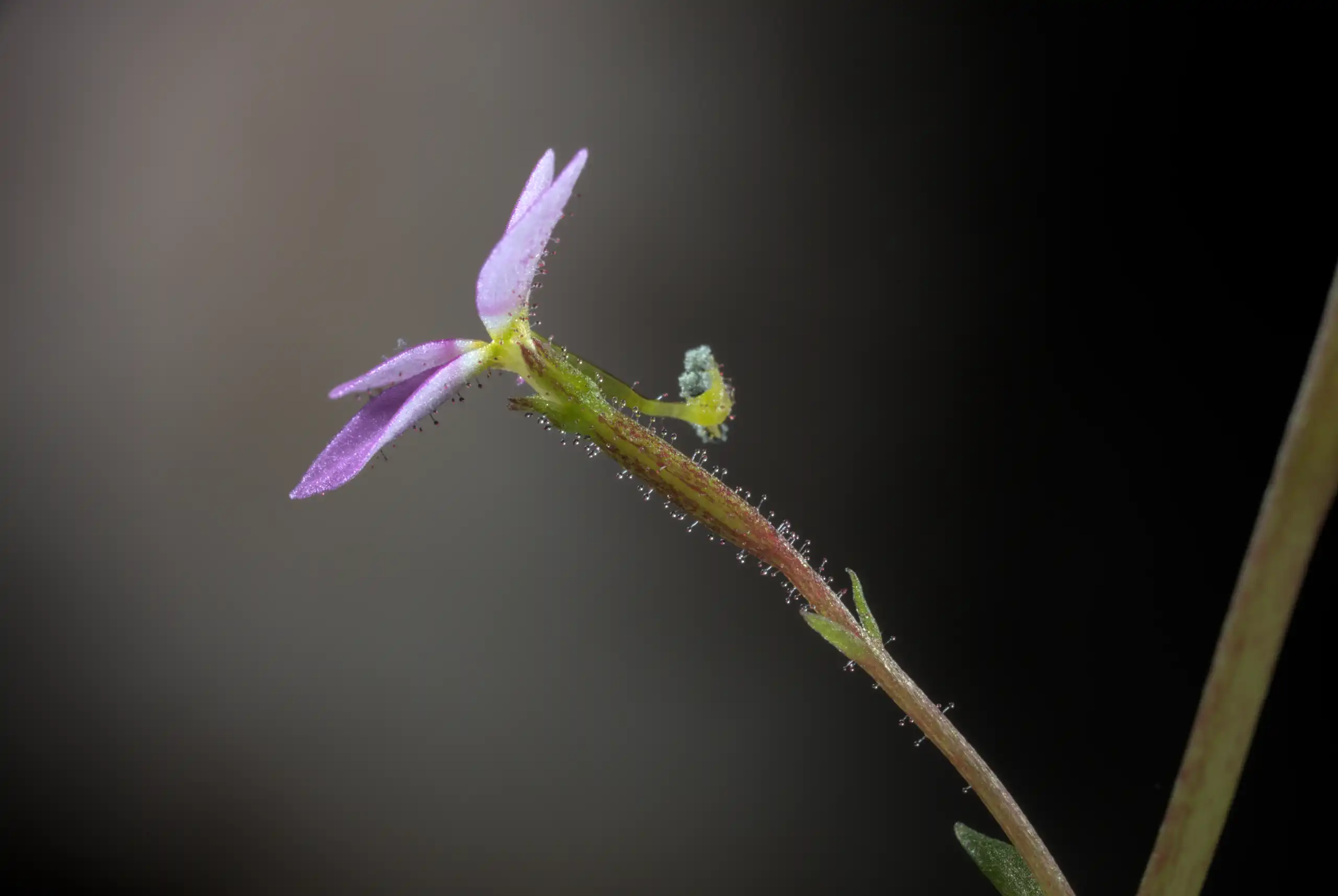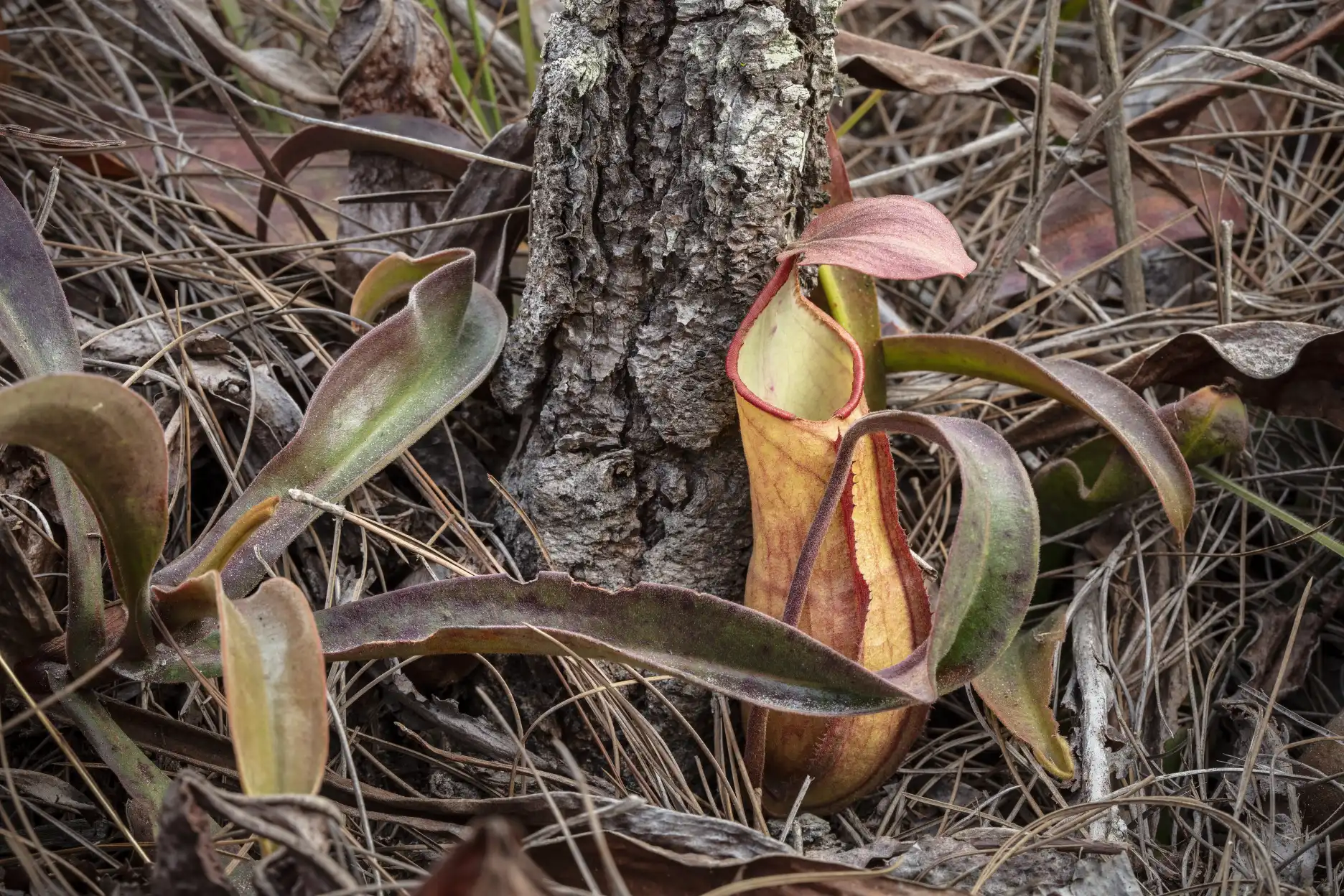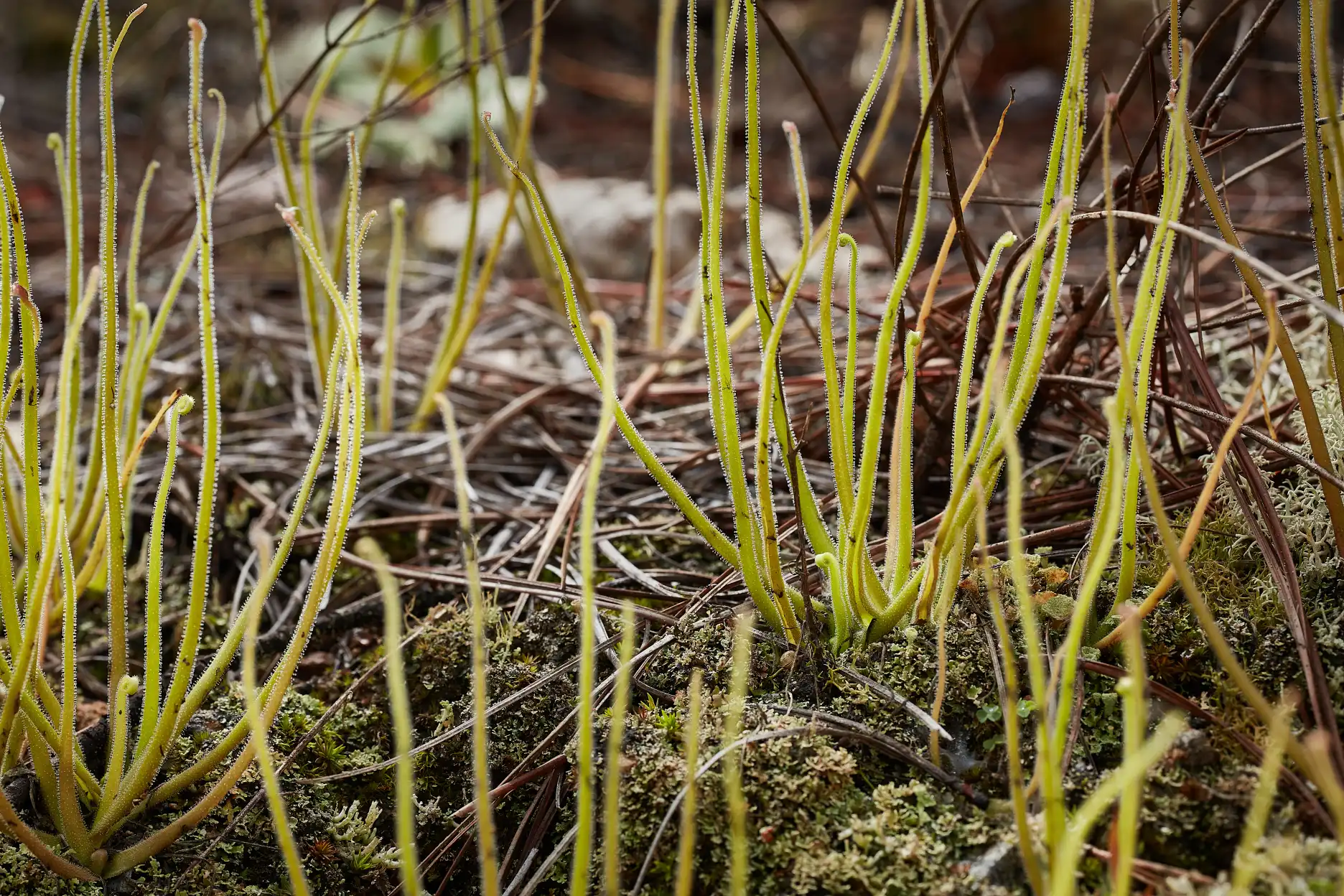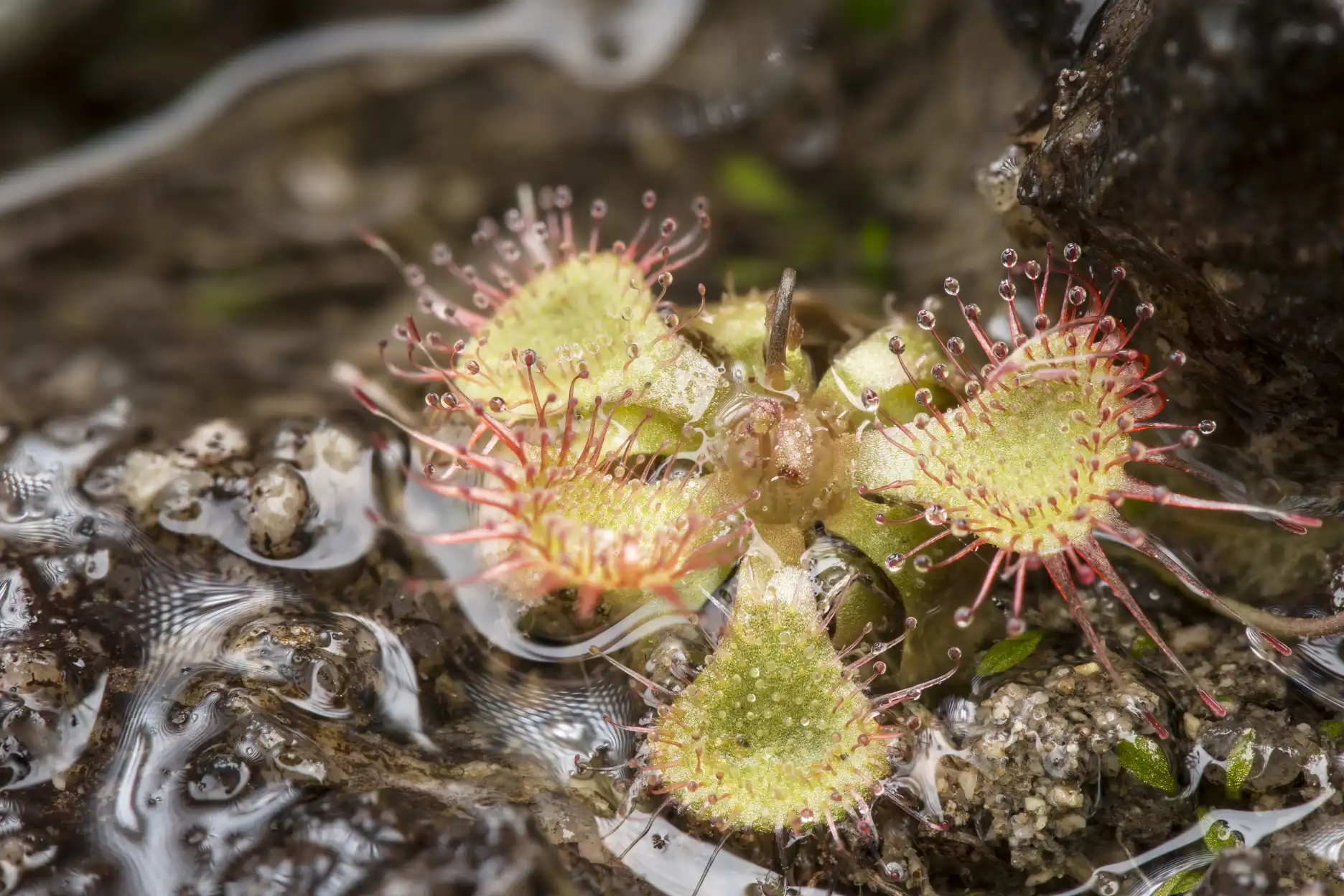Drosera and Utricularia in the Blue Mountains
Australia has long been something of an aspirational destination for me; the countryside, people, and, most of all, plants have all been a great source of fascination. Mostly the plants though.
On a two week trip to the country last fall, I was left with a bit over two days at the end for botanizing. One of those days was spent in the Blue Mountains around Blackheath. Robert Gibson was kind enough to describe a well-known spot for carnivorous plants along the trail between Govetts Leap (pictured above) and Horseshoe Falls.
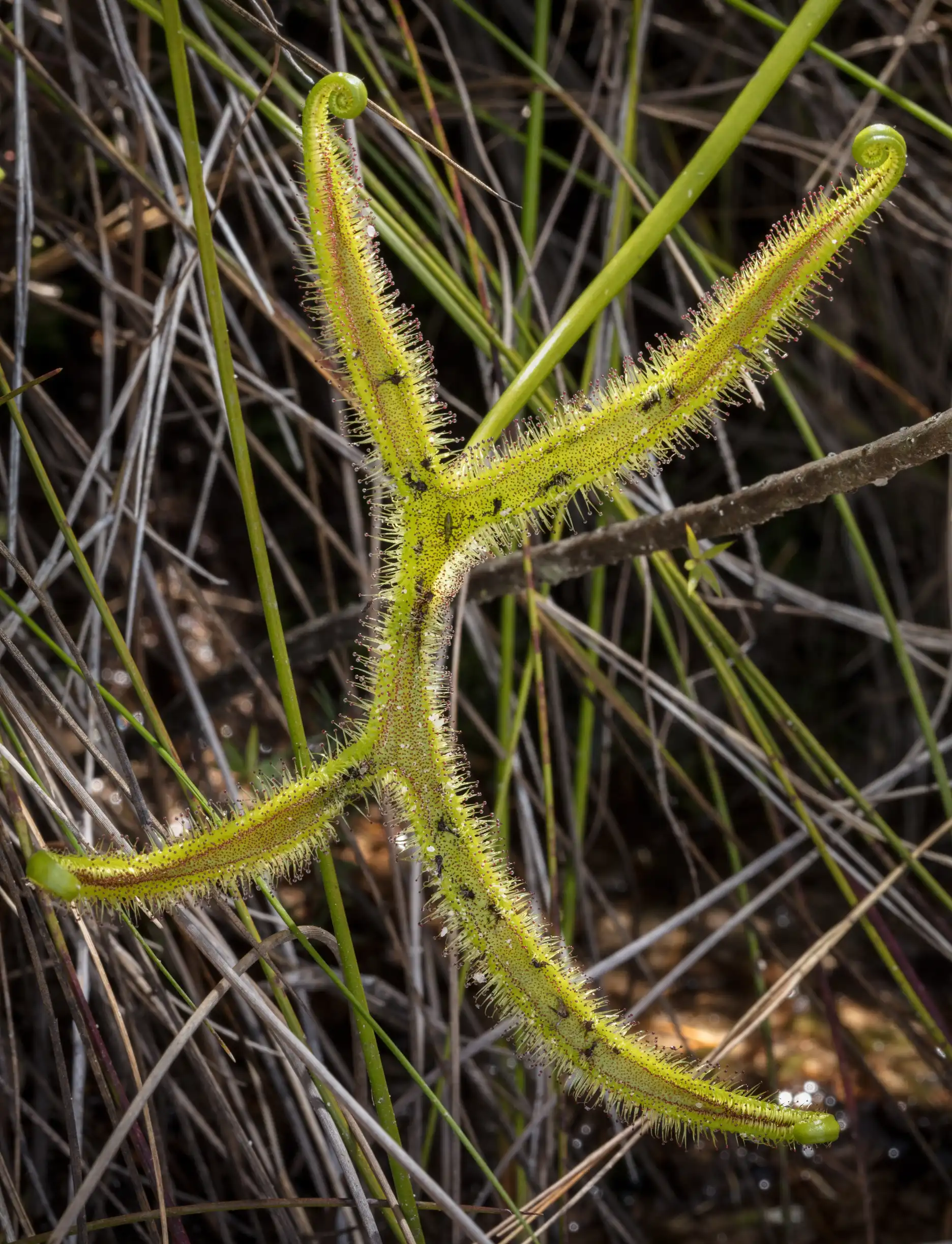
Drosera binata was by far the most impressive plant along the walk. Here is a leaf found along the trail that appears to conform to the unofficial var. dichotoma morphology.
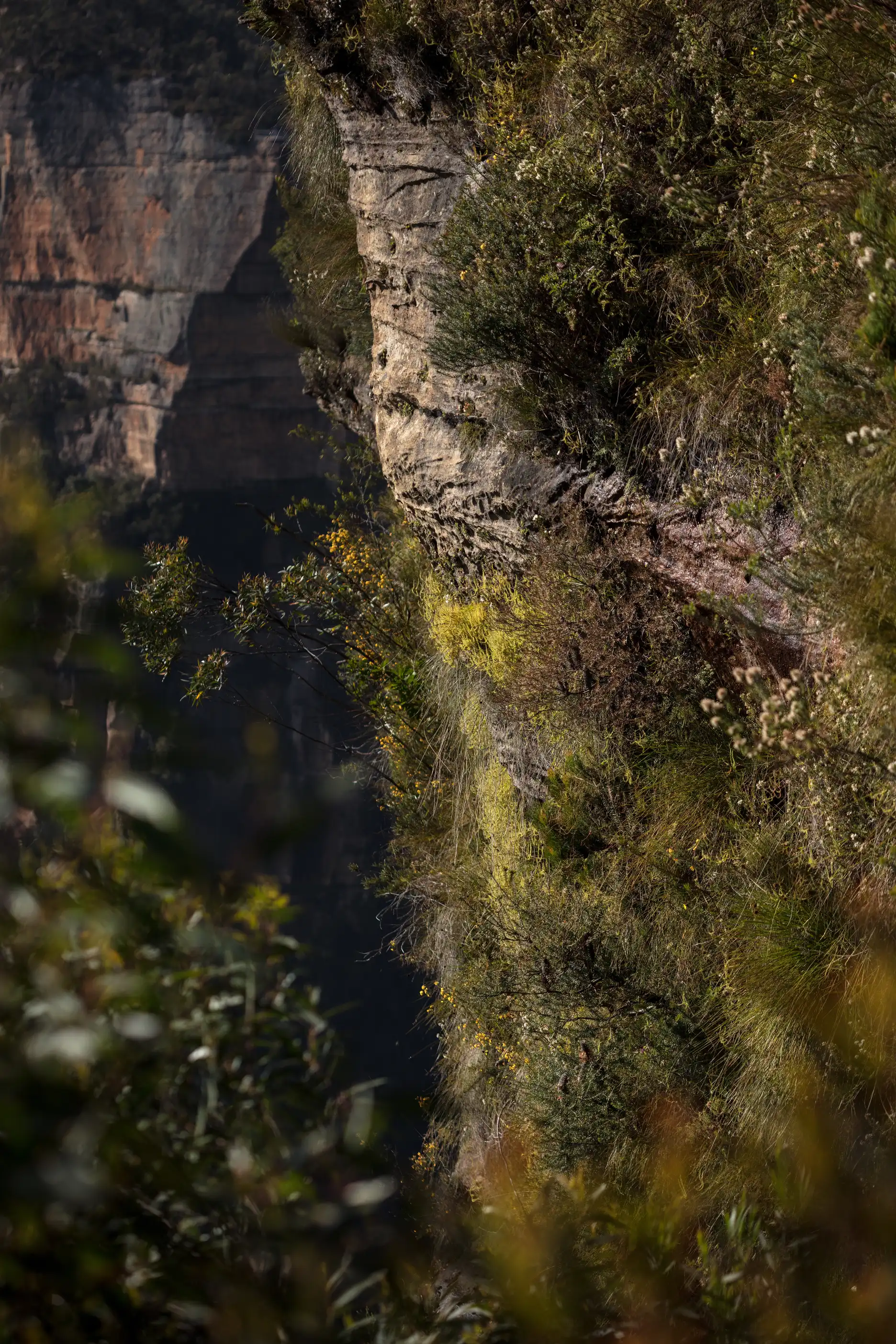
This wet cliff face is visible from the trail between Govetts Leap and Horseshoe Falls and sports an impressive colony of Drosera binata hanging hundreds of meters above the forest below.
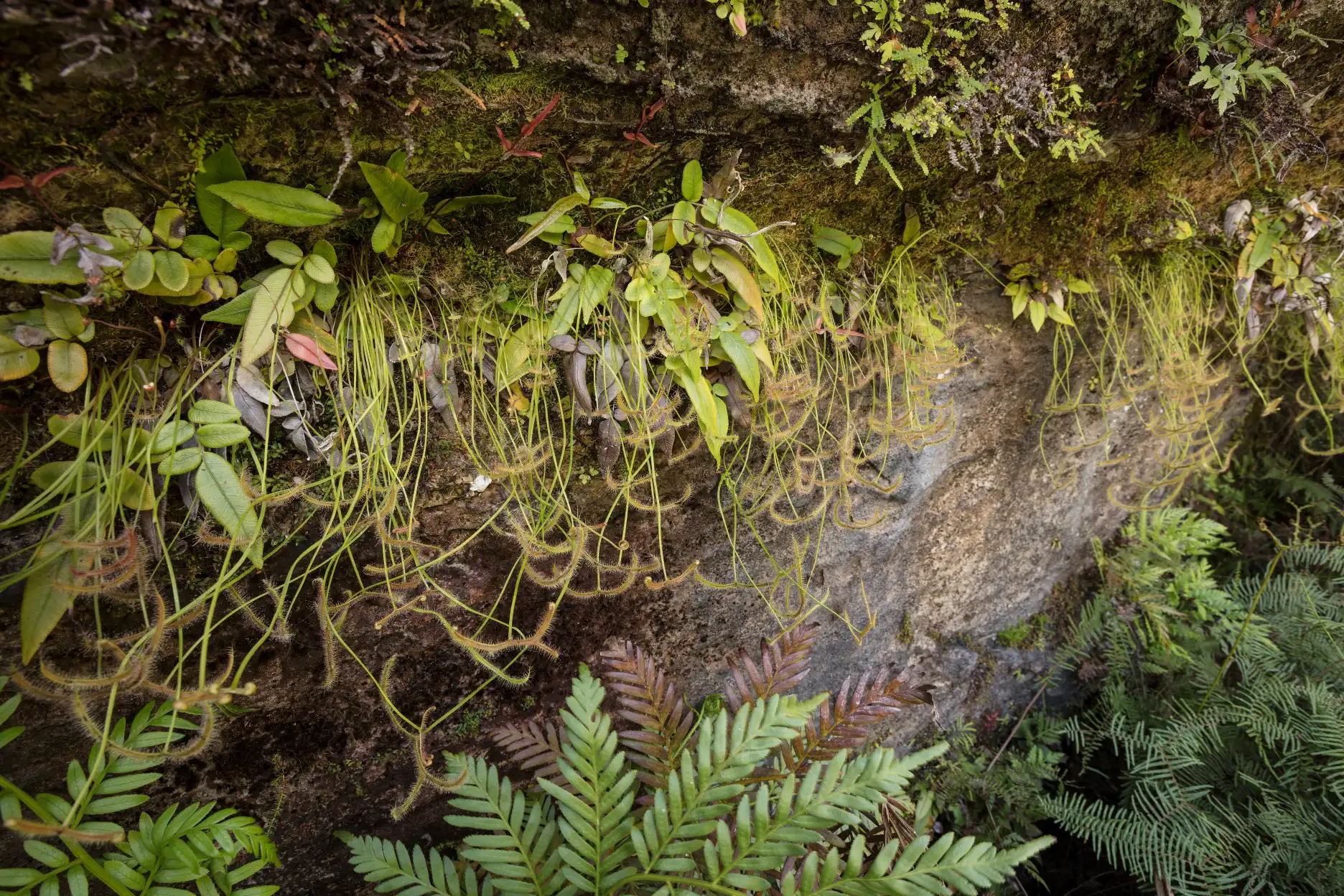
These Drosera binata are growing in a similar manner to those above but on the side of a large boulder rather than a cliff face. The rock is located on Popes Glen Track shortly after it splits off from Govetts Walk. The spot was fantastic to see in person but the plants themselves were not nearly as impressive as those on the cliff face above due to the etiolation resulting from the shade of nearby vegetation.
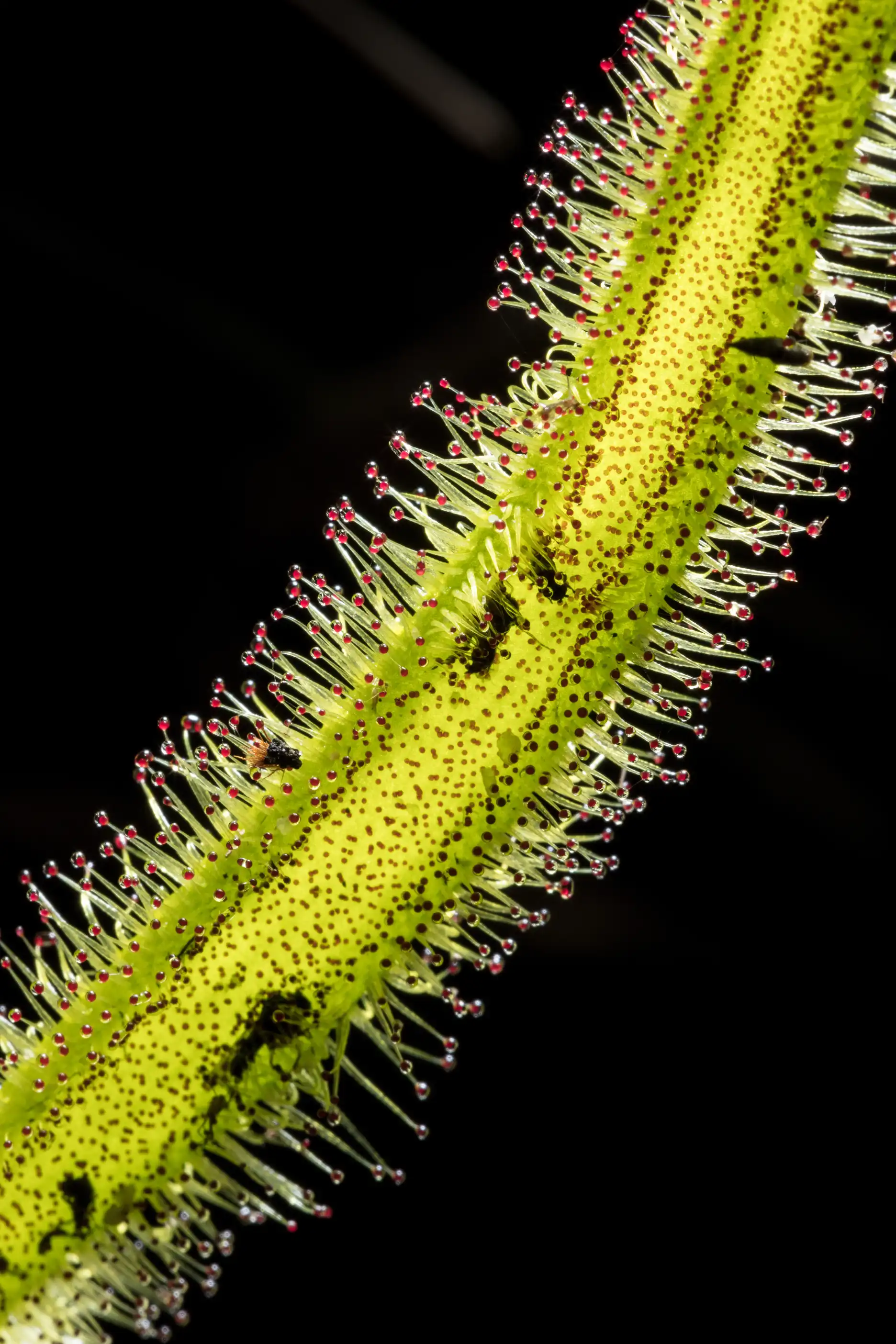 Drosera binata leaf detail.
Drosera binata leaf detail.
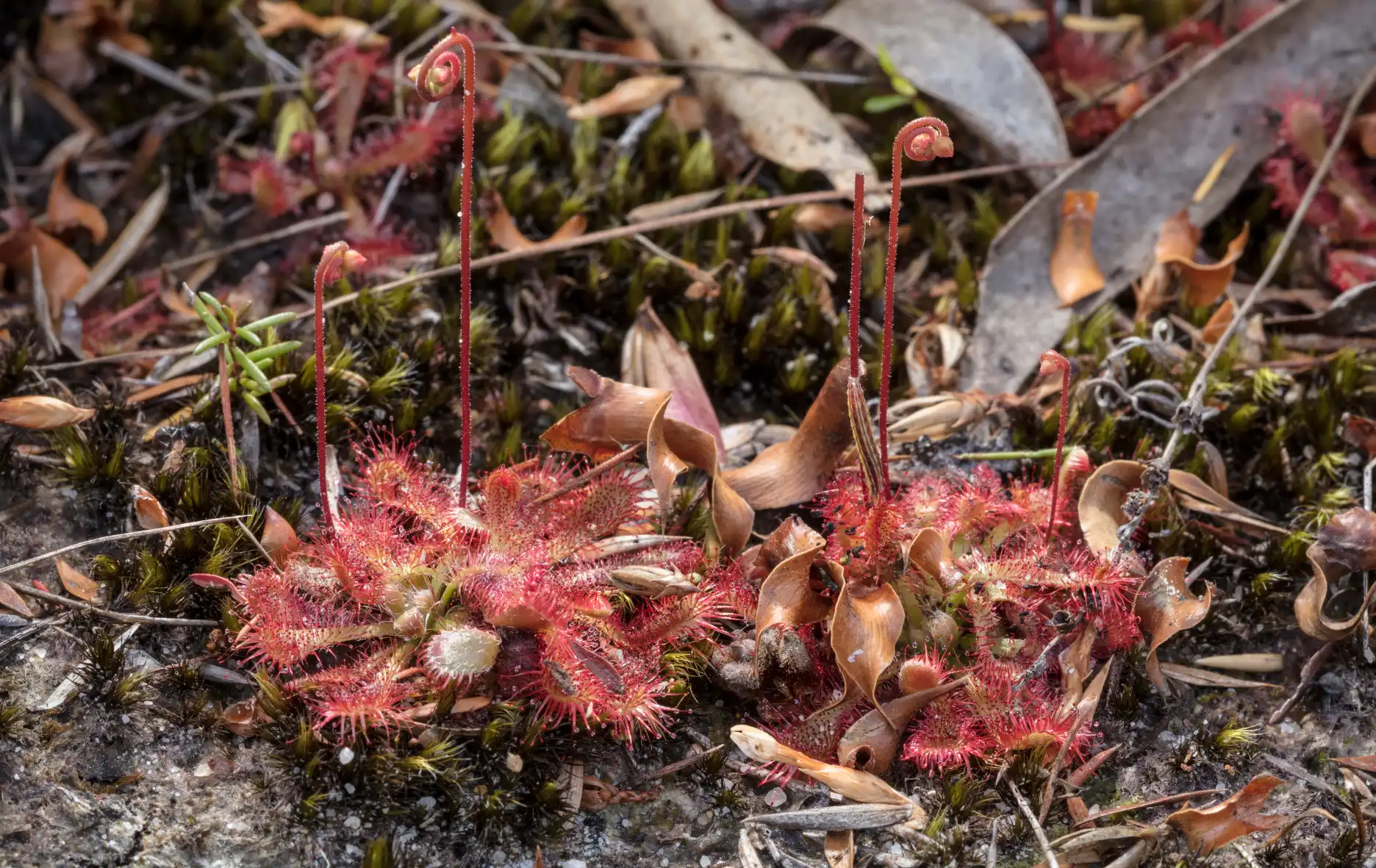
The trail between Govetts Leap and Horseshoe Falls is also home to Drosera spatulata…
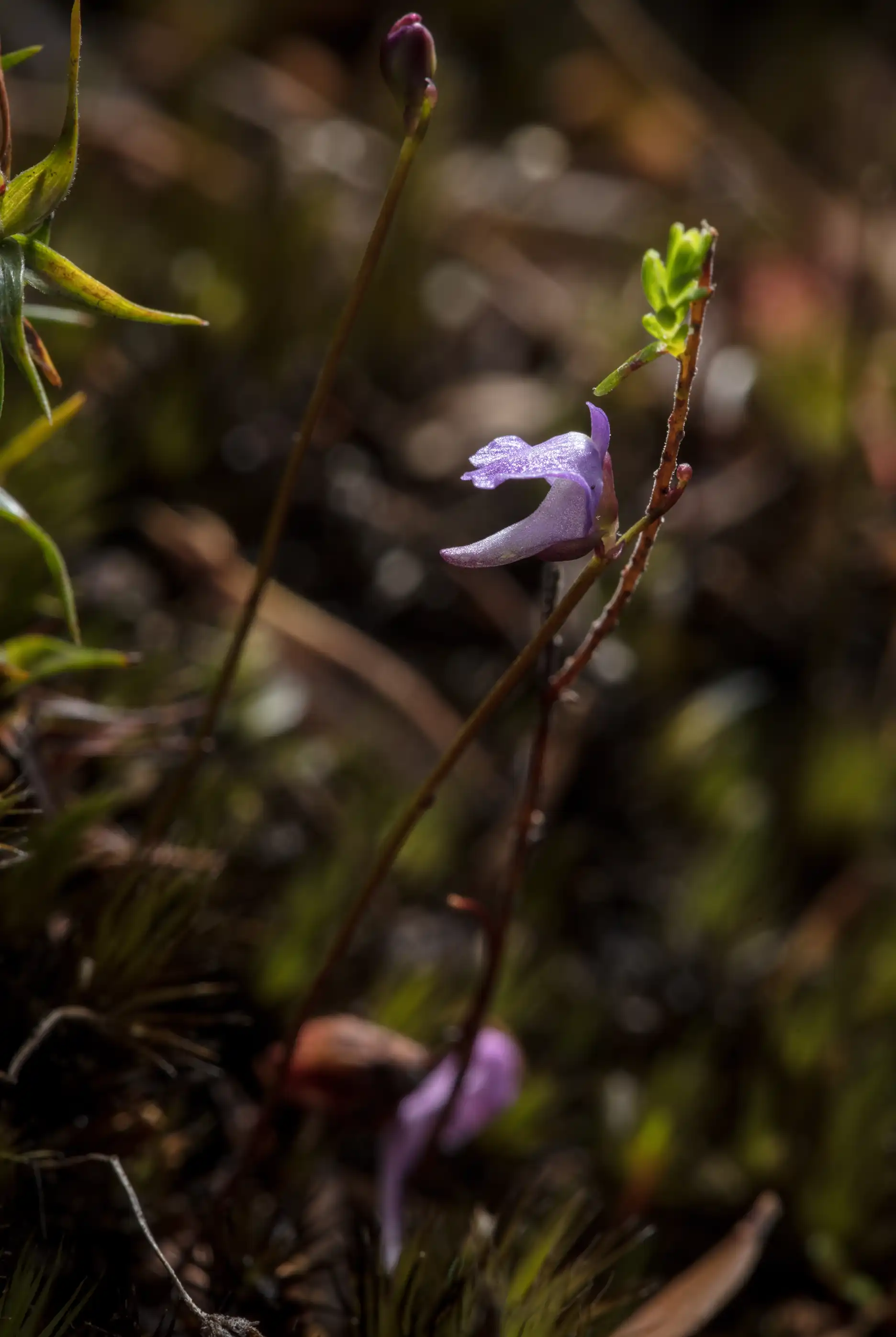
…as well as Utricularia lateriflora. Robert mentioned the presence of Drosera auriculata, D. peltata, and Utricularia uniflora but I did not spot those species here (although I did see Drosera auriculata further down the trail on Popes Glen Track).
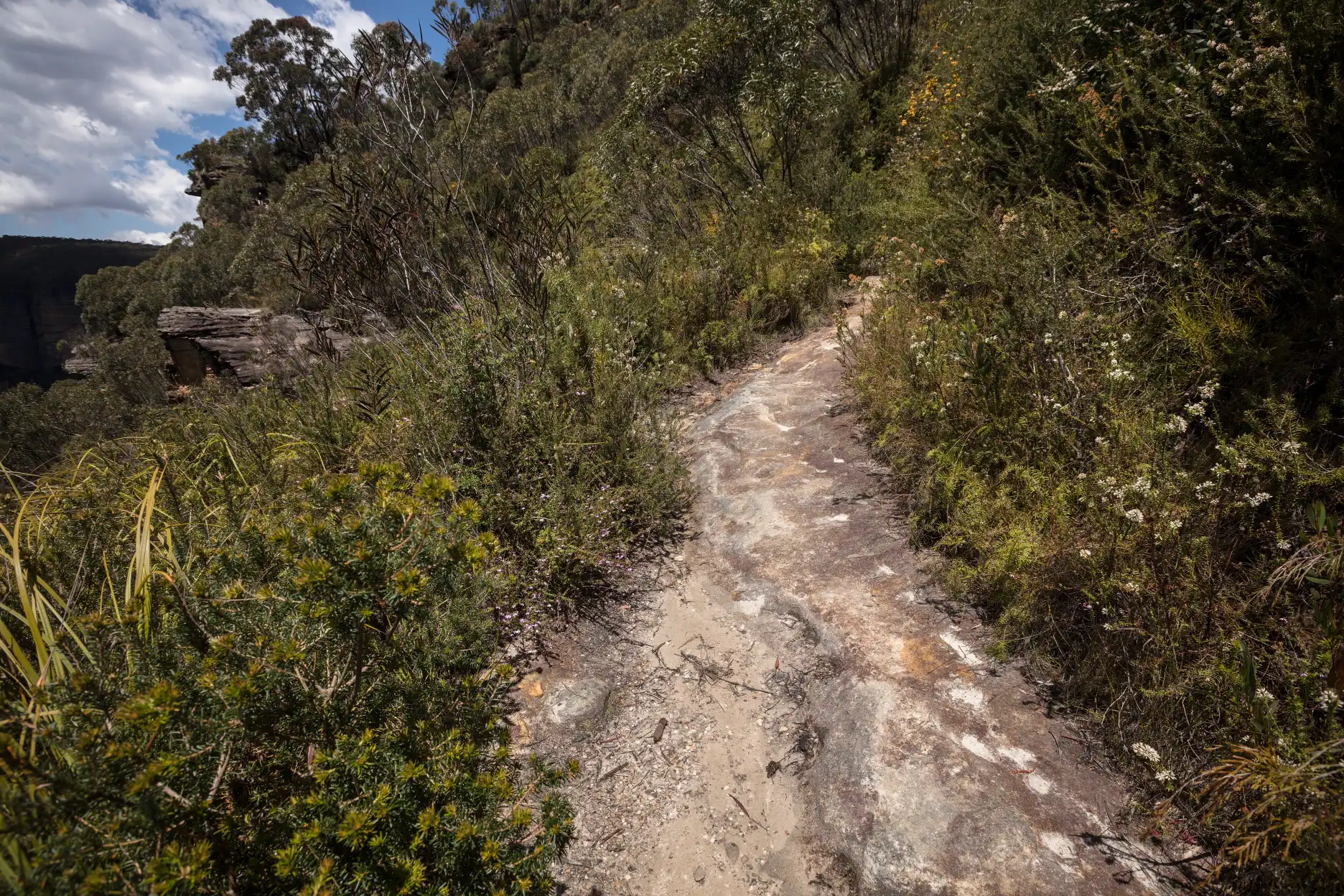
This is a typical section of trail between Govetts Leap and Horseshoe Falls near the Drosera spatulata above.
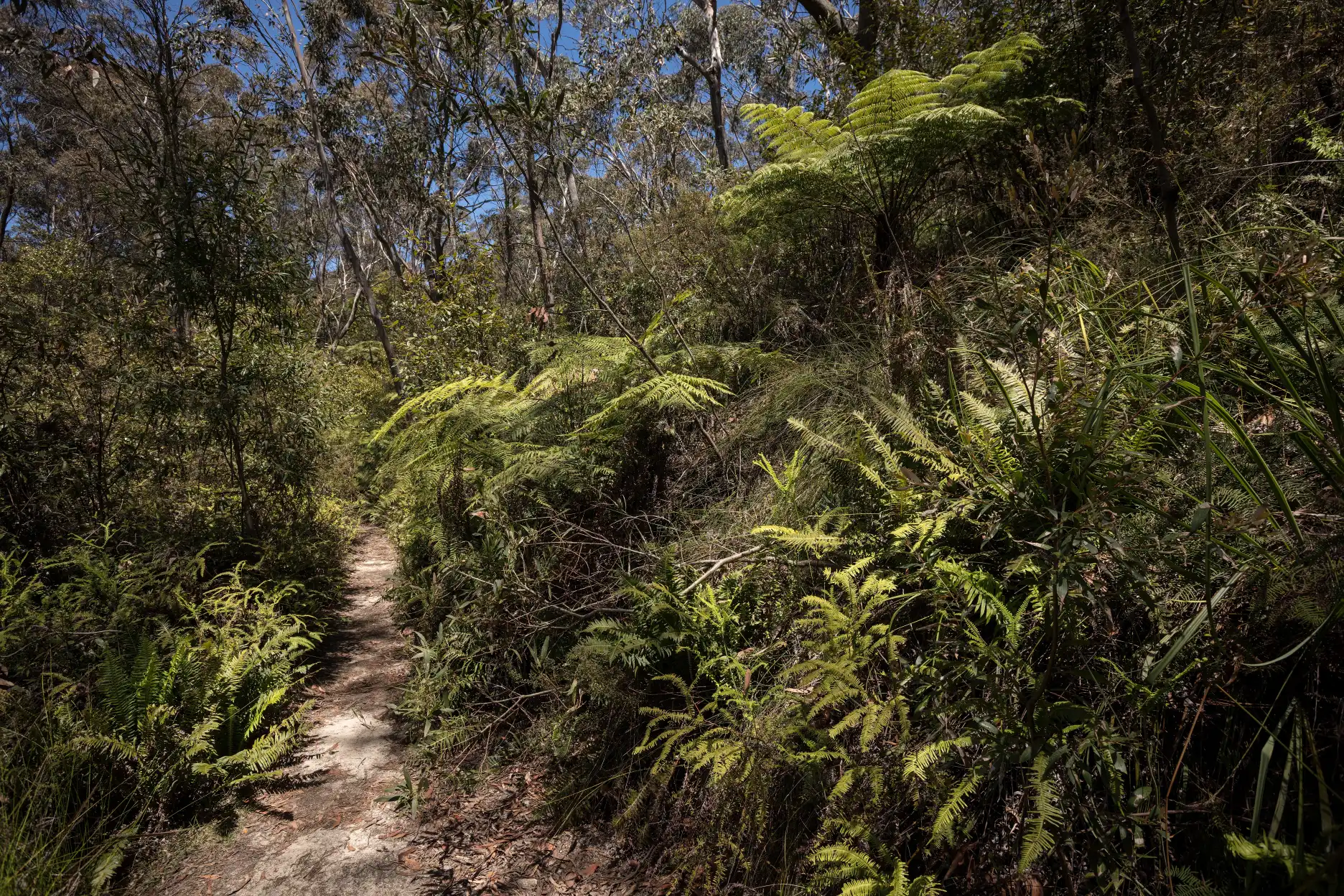
This trail section is quite close to Govetts Leap. Check out the arborescent ferns!
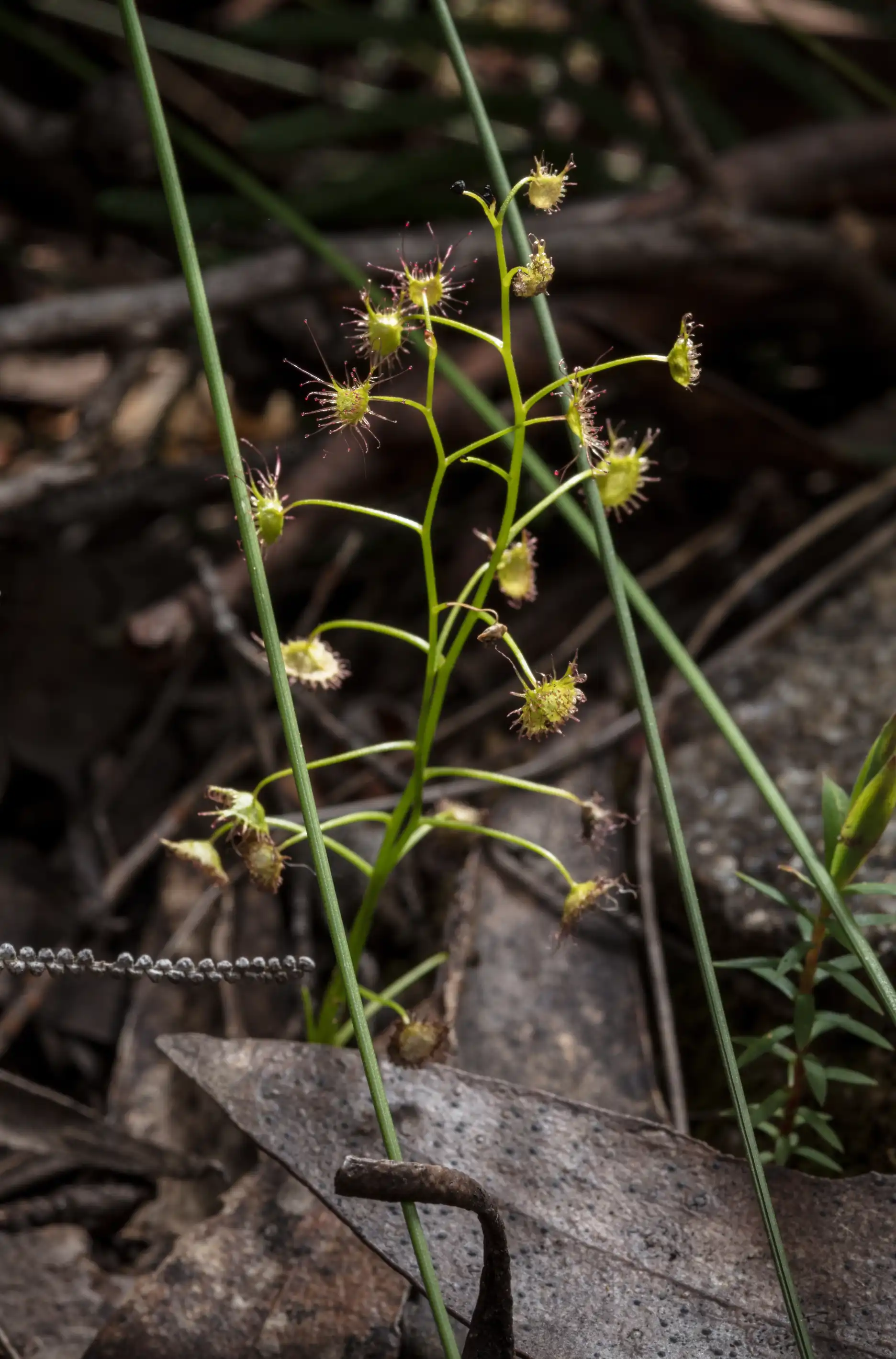
I encountered numerous Drosera auriculata on the Popes Glen track leading back to Blackheath. The plants were in a lightly-wooded area above Popes Glen Creek that was substantially less wet than the areas where I encountered Drosera spatulata and the Utricularia earlier
For the photography nerds out there, I feel compelled to mention at this point that the macro lens I brought on the trip was almost completely unusable the entire time; the iris assembly was loathe to stop down over f/8. Even when the camera reported smaller apertures, only about one in ten exposures was at anything near the reported setting… That made focus stacking impossible and all exposures extremely hit-and-miss as well as exceptionally time consuming. Suffice to say quality control at Canon Professional Services Hong Kong has room for improvement.
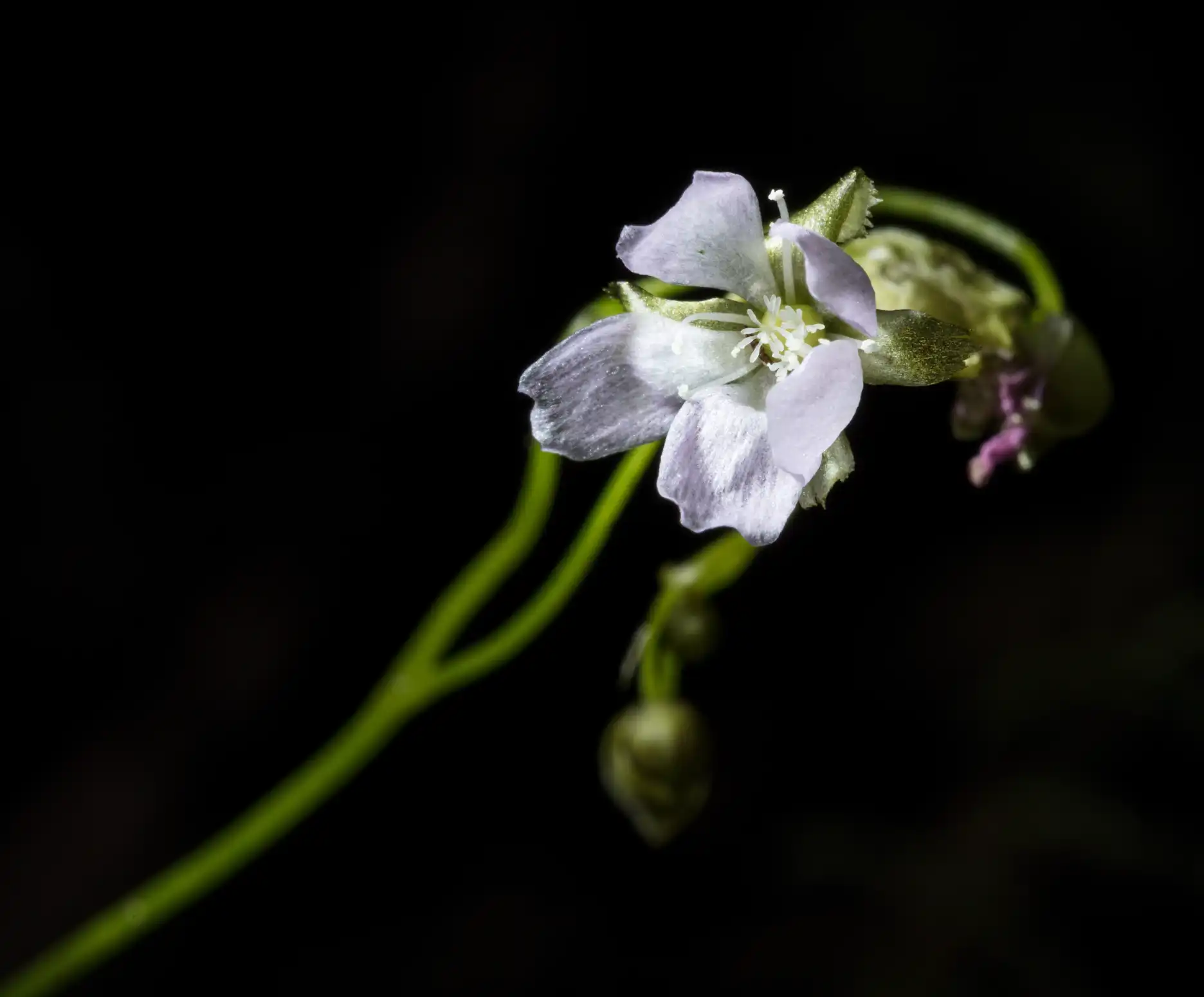 Drosera auriculata inflorescence.
Drosera auriculata inflorescence.
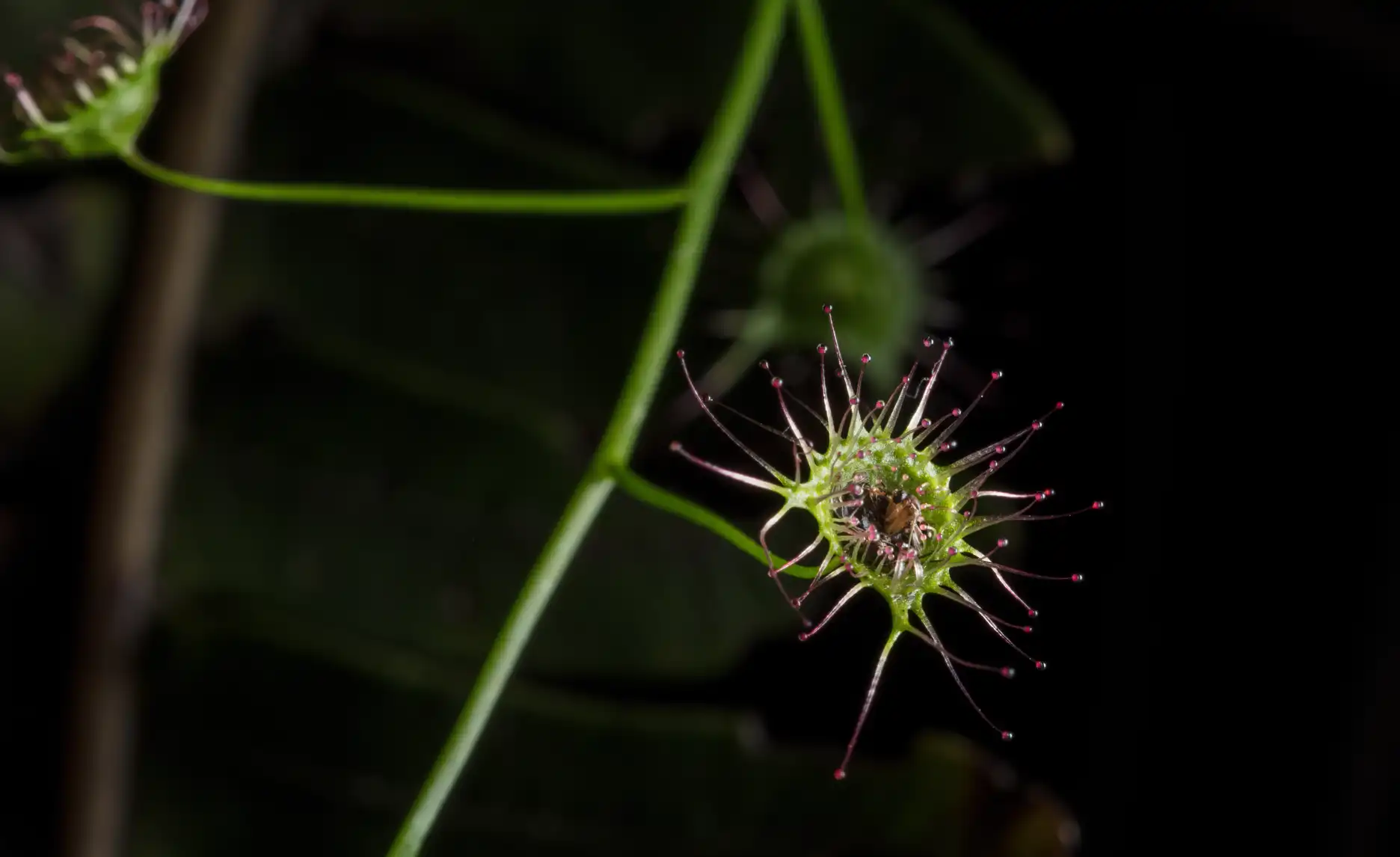 Drosera auriculata leaf detail.
Drosera auriculata leaf detail.
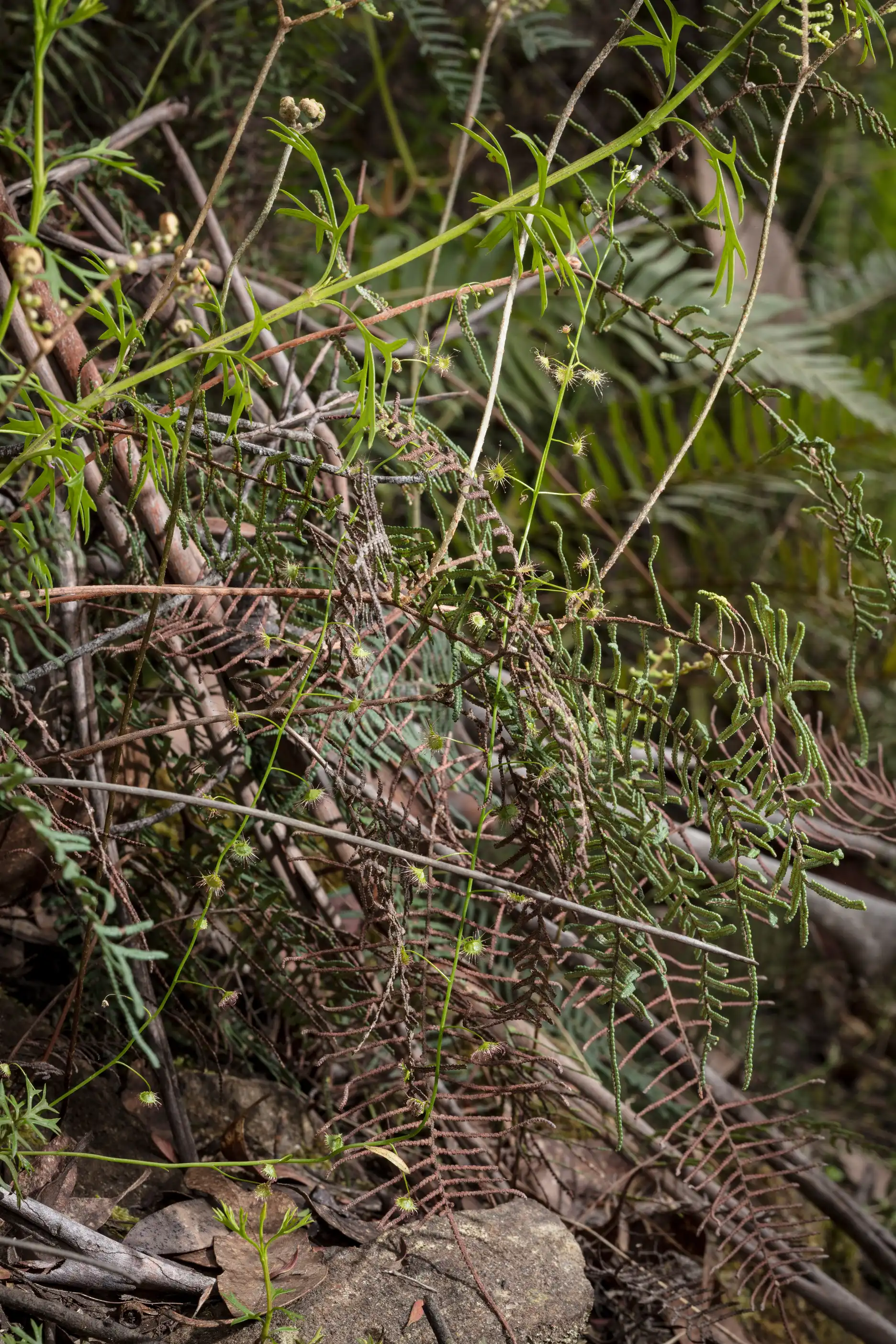
Drosera auriculata with other trail-side foliage. It is very challenging to show the plants in habitat due to their clambering nature.
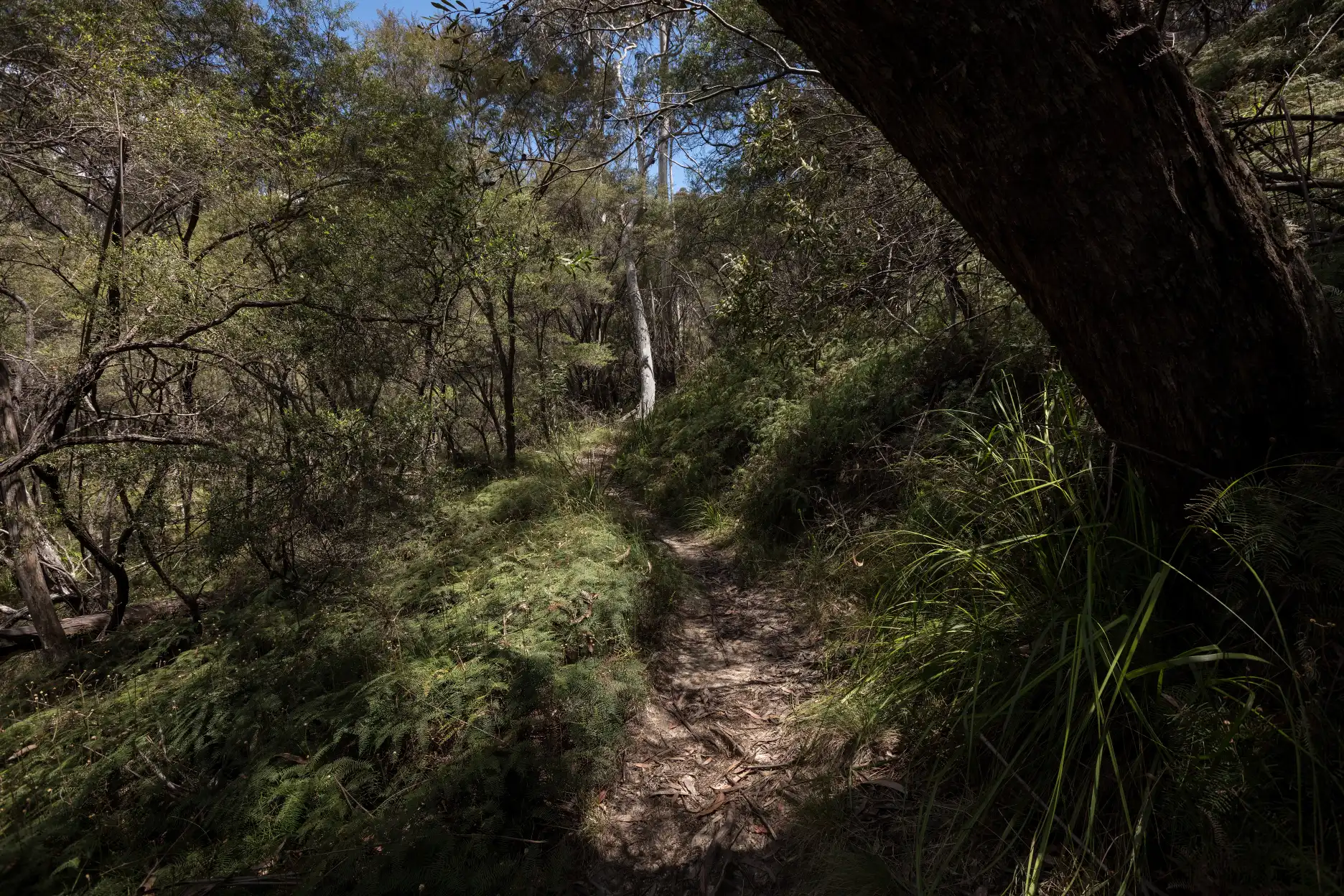 Drosera auriculata habitat.
Drosera auriculata habitat.
A few clumps of Drosera binata also were growing near the Drosera auriculata on Popes Glen track but were not particularly impressive.
The Govetts Leap lookout is within walking distance of the Blackheath train station; I ended up walking down the mountain a bit, past Horseshoe Falls, then looped back up through a trail tributary to arrive back to the train station a few hours later. A rental car would have been nice to have in some regards - it certainly could have allowed slightly more time for hiking and botanizing - but also would have been extremely expensive (like everything else in Australia), not to mention difficult to park in and around Sydney.
